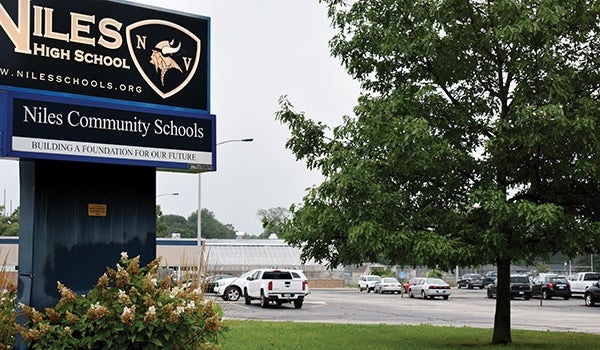What happened to the school nurse?
Published 5:04 pm Wednesday, December 5, 2012
By WILLIAM CRANDELL
Special to Leader Publications
With the recent cuts to education funding in Michigan one of the school services that have been bearing the brunt of those deficits has been the school nurse. But according to the National Association of School Nurses website, the school nurse is an essential part of a child’s education. With nearly 32 percent of students now having some sort of chronic health condition and 18 percent of students having a medical disability the need for medical professionals in schools has grown significantly in recent years.
According to the Michigan Association of School Nurses or MASN nursing professionals support, school systems, in a variety of ways, can be instrumental in assessing a students’ health status, such as helping to identify vision and hearing problems, deliver emergency medical care, administer medication and vaccines and perform a variety of general healthcare procedures such as taking temperatures or removing foreign objects from a child’s ear. Nurses also provide health counseling and wellness programs and help students to manage chronic illnesses and consult on cases to aid parents and keep children in school that may have been unable to attend without adequate medical services. Currently, many of the nation’s children are facing tough economic challenges that can impede access to quality health care and, for these children, the school nurse is often the first line of defense against illness.
Jan Chaudoir, who has been a school nurse for the past 22 years and is employed by Berrien RESA, views the current state budget cuts as one of the reasons for the down turn in school nurses.
“In Michigan, we are definitely seeing a decline in the school nursing profession, and, unfortunately, it is financially driven. As budgets cuts are becoming more drastic, schools are forced to make hard choices and the school nurse is often on the table.”
According to Chaudoir, one of the biggest issues school districts are facing is the inclusion of children with special medical needs that require a more intensive form of monitoring care. An increase in autism spectrum disorders, mental health and emotional disorders, obesity, food allergies, seizures disorders, tracheotomies, stronger medications and lack of access to proper health care in the home have become challenges that school districts must face.
Some school districts are now contracting with private nursing companies to help with students who have serious health issues to save costs. But their employee turnover rates are high, and to many who work in education having a regular nurse there every day who knows the students and how to handle individual health issues is invaluable.
Other districts have turned to asking nonmedical personnel to fill the nursing void. But Stephanie Painter, former president of the MASN, is concerned by this thinking as she testified before the Michigan State House Appropriation Committee in 2010.
“The current level of health care provided in many schools is not safe for students. School secretaries are dispensing medications with little to no training. Students are allowed to self-administer certain drugs with little to no oversight. In some of the districts in Michigan, students are being treated by untrained school personnel such as secretaries and paraprofessionals that sometimes are asked to dispense heavy medications and perform medical procedures with very little to no training.”
According to a recent Los Angeles Times article, only 45 percent of schools in the United States have a full time nurse, 30 percent have a part-time nurse and 25 percent have no nurse on staff at all. Here in Southwest Michigan, only a handful of districts employ a nursing professional: Eau Claire, New Buffalo, St. Joseph, Berrien RESA, Lewis Cass ISD and Dowagiac all have at least one school nurse on staff. The National Association of School Nurses recommends one school nurse for every 750 students to provide adequate medical coverage. Michigan ranks at the very bottom of its list of nurses-to-students scale with one nurse for every 4,411 students. A recent survey conducted by the MASN of Michigan School Superintendents revealed that, of the 279 districts that responded to a questionnaire only 2.9 percent of them employed a medical professional.
The Michigan School Nurse Task Force Summary Report, which was a joint project of The Michigan Department of Community Health and the Michigan Department of Education, revealed there is a critical link between health and wellness and academic success. Improving the school nurse-to-student ratios can decrease absenteeism, increase graduation rates and remove health-related barriers to learning. Research indicates that healthy children learn and succeed better in school.






